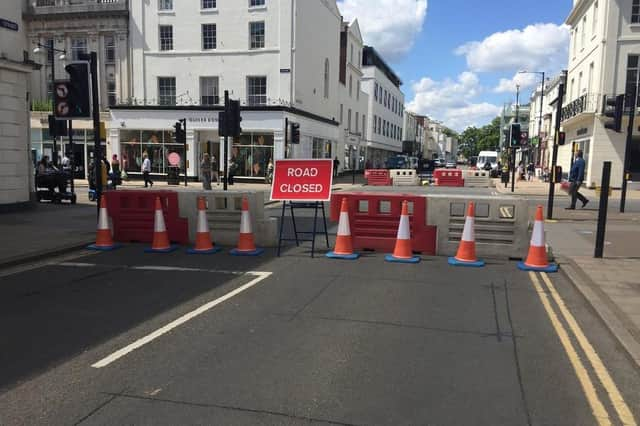New figures hint at possible 'versions of pedestrianisation' for Leamington's Parade


Lessons learnt from the pedestrianisation of Leamington during the height of the Covid pandemic could be used to draw up new schemes to boost footfall.
And it is hoped that data gathered during those car-free months could help 'persuade' some traders opposed to long-term changes.
Advertisement
Hide AdAdvertisement
Hide AdDavid Ayton-Hill, Warwickshire County Council’s assistant director for communities, said schemes were now being looked at for Leamington with data gathered from the Parade being put to good use.
Speaking at last week’s communities overview and scrutiny committee, he said: “What I think is interesting is to see in Leamington the drop-off when we removed the pedestrianisation element. The drop was the most significant among all the towns.
“It was clear that road space allocation did improve and encourage more footfall into town centres and we have also seen an increase in cycling into those areas that were pedestrianised.
"All this data will help us think about how we utilise our town centre spaces going forward.”
Advertisement
Hide AdAdvertisement
Hide AdMr Ayton-Hill admitted that some schemes had worked better than others during the pandemic and even where they were considered a success there were critics and problems.
He added: “In Leamington, people really liked the pedestrianised Parade and the environment it created but it caused problems with bus transport and their route through the town.
“Some of our businesses would say it had a very detrimental impact, some said it had a positive effect. Anecdotally, hospitality and leisure businesses were much happier with the measures as long as they had access for their food delivery which saw a significant rise.
"It was the more traditional retailers and smaller stores who were against it.
Advertisement
Hide AdAdvertisement
Hide Ad“We know there’s more to work on but clearly it ignited an interest so now we are actively exploiting options for the Parade which will be linked to versions of the pedestrianisation.
“In Stratford we have gone even further and have put in a bid from the Levelling Up Fund to effectively install a scheme that will look very similar to what we had - we are trying to create a but of a rambler up the middle of Bridge Street with a pedestrianised area up the middle and restricted carriageways left and right creating a much more shared space and a much nicer environment.
“So the legacy of the schemes is seen in us turning them into proper projects and long-term solutions.
“If you come into the town centre on foot or by cycling or public transport and walk around then dwell time is higher and you spend more money - there is a lot of evidence that backs that up.
"That’s the kind of evidence we need to share with BIDs and businesses and start to educate them alongside other things like online.”